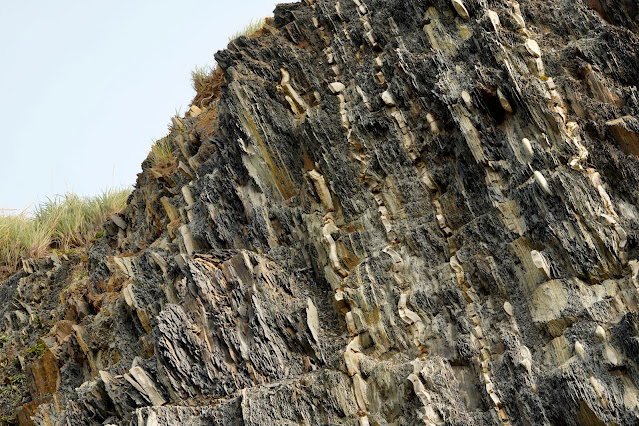A Walk Through Deep Time
Someone recently said to me, "I bet you wish you had studied geology", and I really do. There is so much to learn and I want to understand everything but there is only so much information that I can take in. Sometimes, I feel like my computer which simply stops functioning until it has had a good rest. That little wheel on the screen just spins and spins. Yesterday was one of those days.
The Green Point trail is one of the shortest hikes at Gros Morne, but it is also one of the most impactful. It is a geologist's dream.
Since I don't trust myself to explain what is going on at Green Point, I will let Michael Bursynski speak:
The cliffs at Green Point contain fine layers of dark grey shale--a 30-million-year record of sediment accumulation and marine life in the Iapetus Ocean. Inter-layered with the shales are thicker strata of light-coloured sandy limestone, including some bands of limestone conglomerate....The beds here have been tilted (actually overturned) to an angle of about 115 degrees from the original horizontal sea floor.
The rock layers to the south are the oldest. They accumulated during the late Cambrian Period. To the north the beds are from the more-recent Early Ordovician Period. Each one-metre step that you take northward along the cliffs carries you past about 60,000 years of sediment accumulation. (Michael Burzynski, Gros Morne National Park: The Most Beautiful Place, pp. 79-80.)
 |
| I am happy because every metre I walk takes me through 60,000 years of deep time. |
 |
| Geologists are still arguing over what could have caused this pattern, which is so rare, it is only seen one other place in the world (Australia). To make things even more exciting, there is a layer in which some very interesting fossils appear. This layer is right between the Cambrian and Ordovician sediments. This fossil is the conodont, Iapetognathus fluctivagus, a teeny tiny creature which pre-dated vertebrates like fish. This is significant because its existence in this layer determines a very precise boundary between the two periods. Other fossils that appear in this area of the rock face are graptolites. So-called because their remains look like pencil lines. Graptolites were colonial so you see their remains in patterns. |
Also: Wooly Bear Caterpillars








Comments
Post a Comment